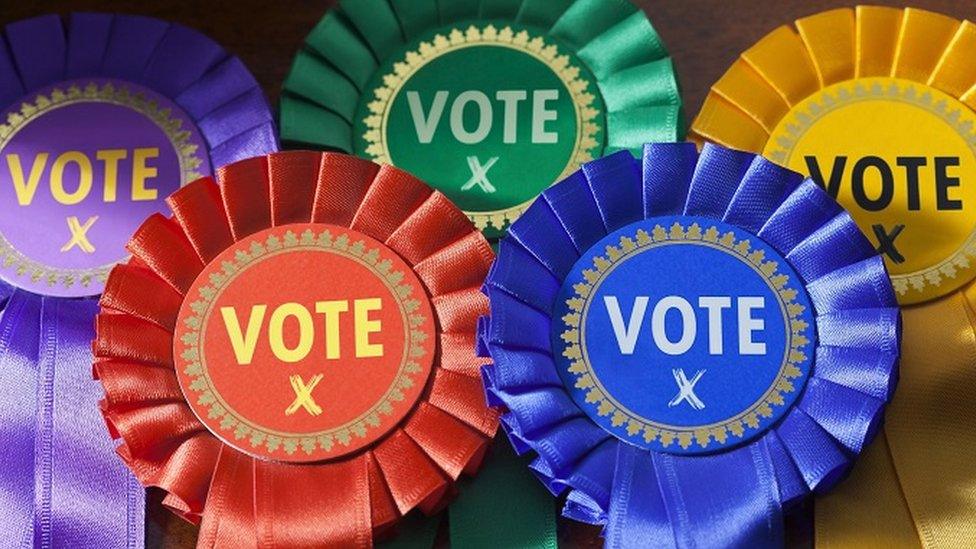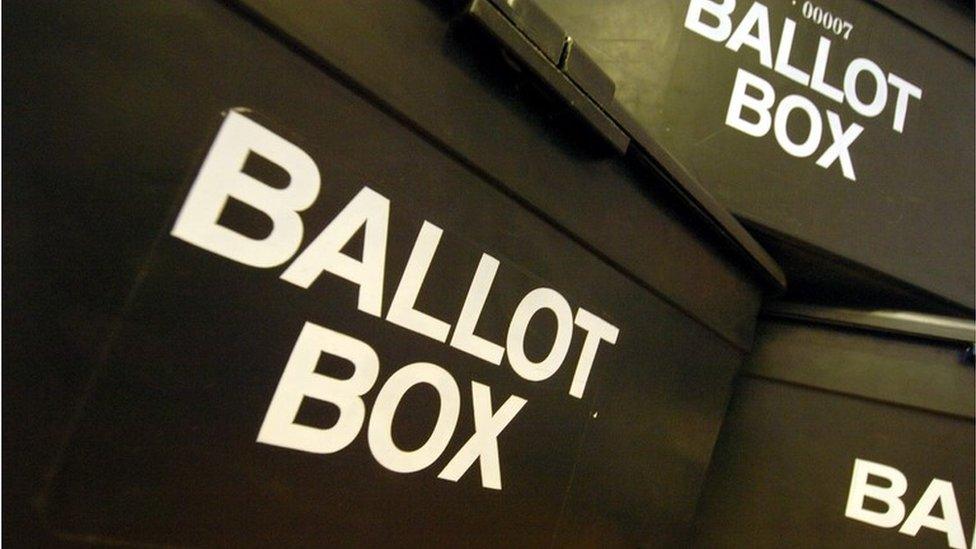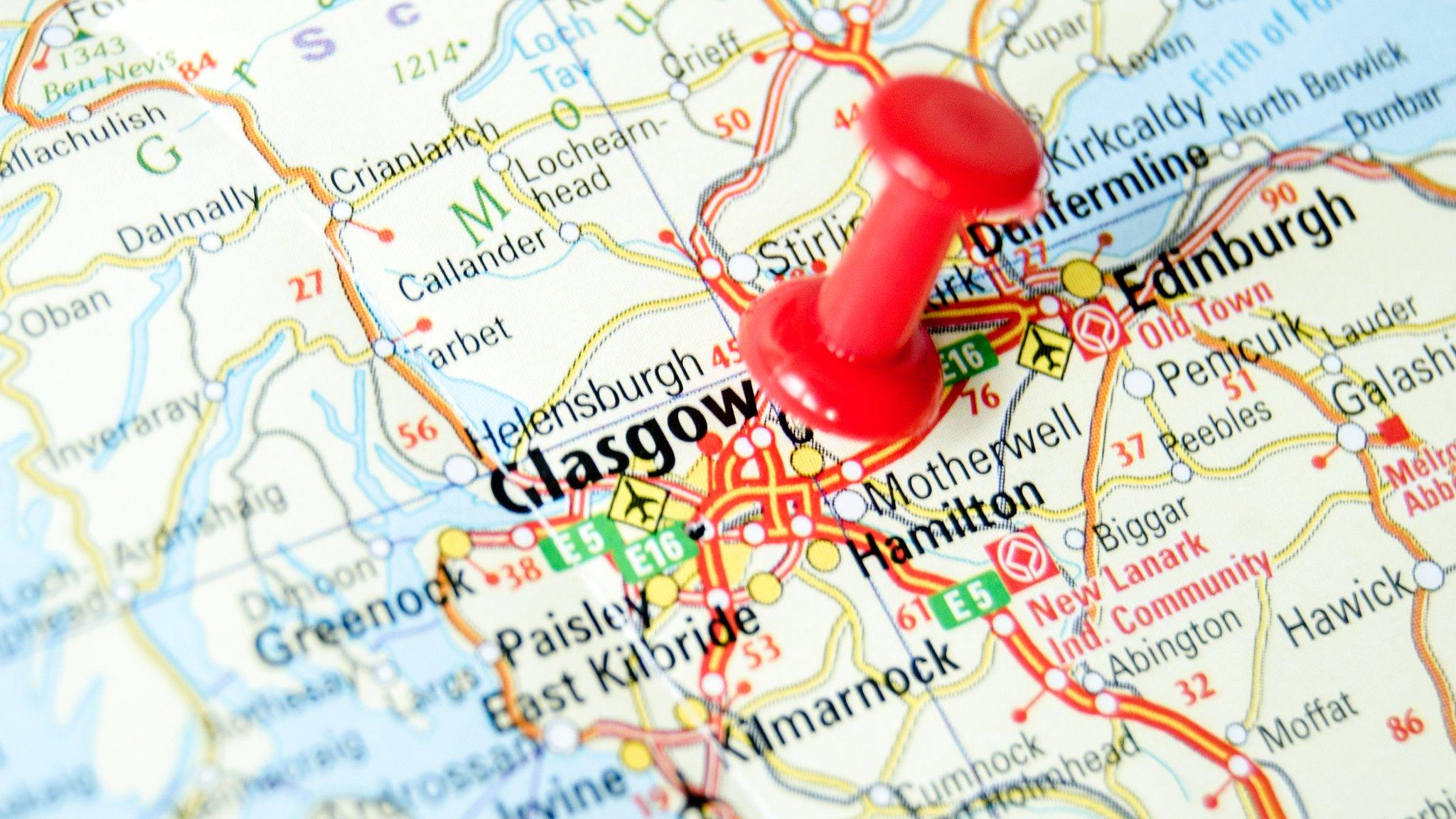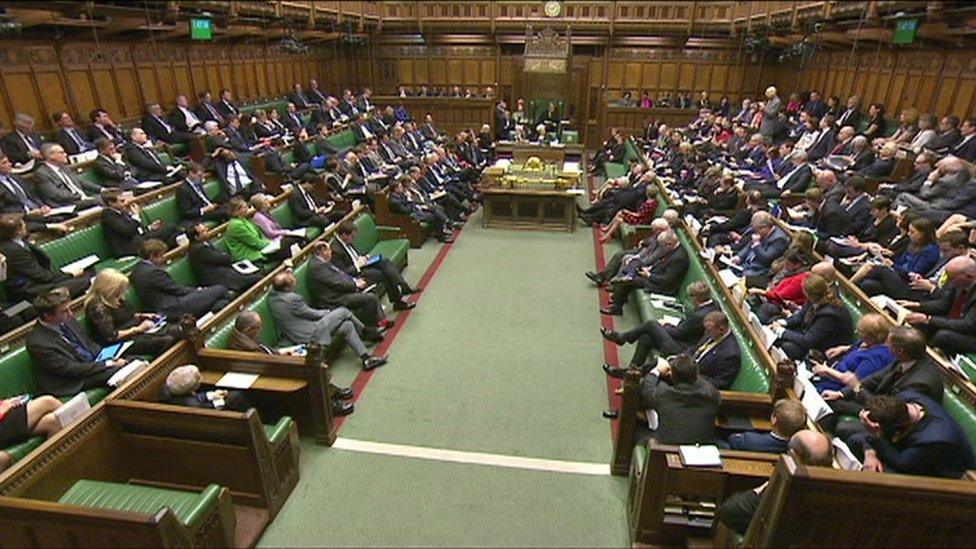Boundary changes: Final proposals published
- Published

Final recommendations for new parliamentary boundaries that could see the number of MPs cut from 650 to 600 have been published.
The Boundary Commission proposals, which still need to secure the backing of MPs and peers, have been laid in Parliament.
The commission said it was "confident" in its new map, which covers constituencies across the UK.
Parliament approved the principle of reducing the number of MPs in 2011.
Since then, the Boundary Commissions of England, external, Scotland, external, Wales, external and Northern Ireland, external were meant to redraw the UK's political map every five years to take account of changes in population shifts.
According to analysis of the final proposals by politics professors Colin Rallings and Michael Thrasher, of Plymouth University, the Conservatives would have won a 16-seat majority at the last general election under the redrawn boundaries.
They said there had been no material change to their prediction since last year's publication of proposed boundaries.
The reduction in the number of parliamentary constituencies was meant to happen while the Coalition government was in power between 2010 to 2015.
But it was abandoned in 2013 after the Liberal Democrats withdrew their support, having failed to agree on House of Lords reform with their Tory partners.
As a result, the 2015 election was fought on the same boundaries as in 2010, as was the snap general election in 2017.
The proposed number of seats for the next election are:
England: 501 (down from 533)
Scotland: 53 (down from 59)
Wales: 29 (down from 40)
Northern Ireland: 17 (down from 18)
As well as reducing the number of seats, the review aims to make constituencies more equal in size, in terms of their total number of voters - between 71,031 and 78,507.

Although the changes are expected to most benefit the Conservatives at the ballot box, some big name Tories - including former foreign secretary Boris Johnson and ex-Brexit secretary David Davis - could face a tougher battle due to changes to the composition of their seats.
If MPs reject the proposals, the next election will be fought on demographic data based on the 2000 electoral register and will not take into account changes since then.
Next steps
Critics of the changes have warned that Brexit will mean more legislation in the coming years - and that fewer MPs means less parliamentary scrutiny.
Labour MP Nic Dakin, who represents Scunthorpe, said that the changes would not be good for democracy, pointing to the loss of MEPs that will come as a result of Brexit.
But the Tories have insisted the system is currently weighed against them and the boundaries - decided by population figures - are out of date.
Secretary to the commission, Sam Hartley, said: "We're confident that the new map of constituencies best reflects the rules set for us by Parliament and we're especially pleased that our recommendations are based heavily on what members of the public have told us about their local areas.
"It is now up to the government to present our report to Parliament, and we look forward to being able to publish our recommendations once that has happened."
- Published20 October 2016

- Published17 October 2017
